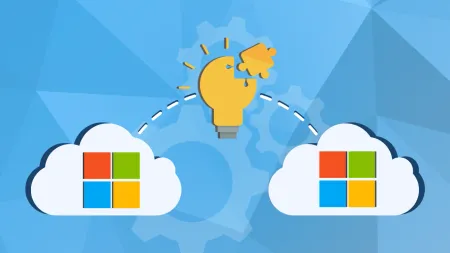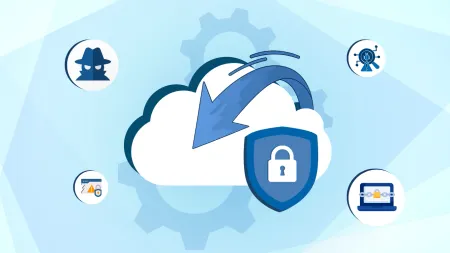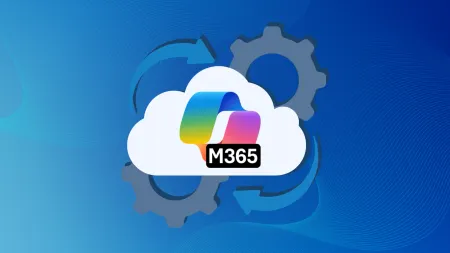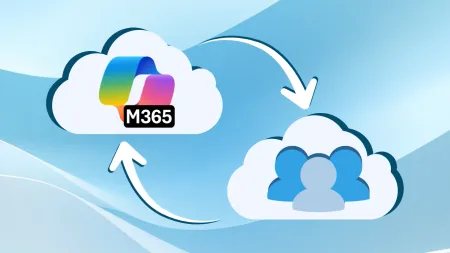New Study Shows Why the Recycle Bin Isn’t for Data Recovery
A recent study revealed that Office 365 administrators commonly rely on the Recycle Bin for data backup, posing a potential risk. This practice is not recommended, and alternative, more secure solutions ...

A recent study found that Office 365 administrators use the Recycle Bin to back up their data. This is an alarming, preventable mistake that puts your data at risk. Here’s why the Recycle Bin isn’t a good place to back up data and smarter solutions you can implement.
Why You Shouldn’t Use the Recycle Bin For Data Recovery
The Recycle Bin is designed to safeguard against accidental data loss. It is not a data recovery solution, and doesn’t have the capabilities to protect all the data stored in SharePoint, OneDrive, Exchange and other business services. The Recycle Bin is also only temporary — Microsoft does not save your data. All data stored after the 30-day time limit in the Recycle Bin is deleted and unrecoverable.
This problem isn’t just relegated to small business owners. Rod Mathews, SVP and General Manager of Data Protection at Barracuda Networks suggested that Fortune 500 companies may be using the Recycle Bin as their backup strategy as well.
But increasingly frequent ransomware attacks mean that security leaders need to rethink their data security strategies. Take a look at WannaCry. The WannaCry attack was a blackmail worm that spread like lightning. It affected over 200,000 computers in 74 countries before a kill switch was discovered and activated. A solid disaster recovery plan can mitigate the effects of these types of attacks. Here’s how to create a smarter backup solution.
How to Create Smarter Data Backup Solutions
Here are a few steps to create and implement smarter backup solutions that don’t involve the Recycle Bin for data recovery.
Start With a Disaster Recovery Plan
With a disaster recovery plan, it’s crucial to be able to recover data regardless of the type of losses incurred. To start, you need a disaster recovery plan. Identify each data set that needs to be backed up, what disasters you want to protect against and how you’ll recover each data set in each type of disaster.
Determine Your Backup Destination
Determine where your data will live. Will you use on-premises, cloud or hybrid backup? With a hybrid-cloud backup, you’d be able to maintain synced backups in both locations, increasing your business’ viability and ability to bounce back in just about any disaster.
If you’re not sure, the hybrid method and 3-2-1 Rule is a good place to start. The 3-2-1 Rule involves three total copies of data. Two copies are stored on-premises on different devices. Keep one copy on your computer, another copy on an external hard drive and a third copy of the data offsite in an online backup solution that consistently scans your computer and uploads your data to an offsite datacenter.
The 3-2-1 Rule is a good rule of thumb guideline to data backup. Having two copies onsite ensures you have a way to access your data if anything happens to your computer (provided you keep your external hard drive updated.) Offsite data storage is the crucial component to having a secure backup strategy. Even multiple on-premises data backups won’t keep you safe. If stored close together, you could lose both in an emergency or natural disaster.
Recommended Backup and Recovery Services
If your environment does go down, you’re not making money. Customers expect a high level of uptime and availability, otherwise they’ll go somewhere else. Without a data backup plan, it will take you significantly longer to get back to standard operating procedure. The good news is you don’t have to write the playbook from scratch. We’ve done the heavy lifting and compiled a list of the top backup and recovery services available.
Microsoft Azure
- Scalable for all size businesses
- High availability, low downtime, minimal disruption
Amazon Web Services
- Designed with a focus on scalable, secure, durable storage without any on-premises infrastructure
iDrive (small business)
- A good option for small businesses
- Backup all computers, smart devices and servers into a single iDrive cloud account
Acronis Backup 12.5
- Disk-imaging backup provides complete business protection
- Flexible storage options available on-premises or in the Acronis cloud
Carbonite Cloud Backup
- Best for small businesses
- Easy-to-use management tools
- Affordable and scalable for businesses
Accessing Your Data
Backing up your data isn’t enough. You not only need a backup plan, you need to know how and where to find your data in the event of an emergency. Barracuda’s survey asked general technologists from a wide range of industries and business sizes how they safeguard their information. Seventy percent of the respondents said data accessibility was equally as important as data availability. In the event of an emergency, you’ll need certain data immediately. You might need to access different data sets from different systems that are stored in different places. Account for crucial factors like this in your backup and recovery plan.
Testing Your Backup System
Using Recycle Bin for data recovery also doesn’t leave any room to test your backup system. Testing is critical to ensure your backup plan is effective and will work when you need it. It’s also one of the most overlooked tasks — 81.2 percent of survey respondents don’t test their data protection strategies more than once a year. Around 50 percent don’t test them at all. In day-to-day business operations, data fluctuates constantly. Files change in value and size, and data moves from place to place and new applications might get missed. Along with regular testing, your data and backup plan should include random “spot checks” to keep all documentation up to date.
Going Beyond the Recycle Bin for Data Recovery
Using the Recycle Bin for data backup is a temporary, shoddy plan that could compromise your business data. Despite the facts, a data backup plan is a critical component many businesses still overlook.
At Agile IT, our data backup focus is simple — plan to fail; don’t fail to plan. We’ll help you choose the level of protection you need for your businesses, ensuring you have instant access to your data whenever and wherever you need it. Schedule a call today.





